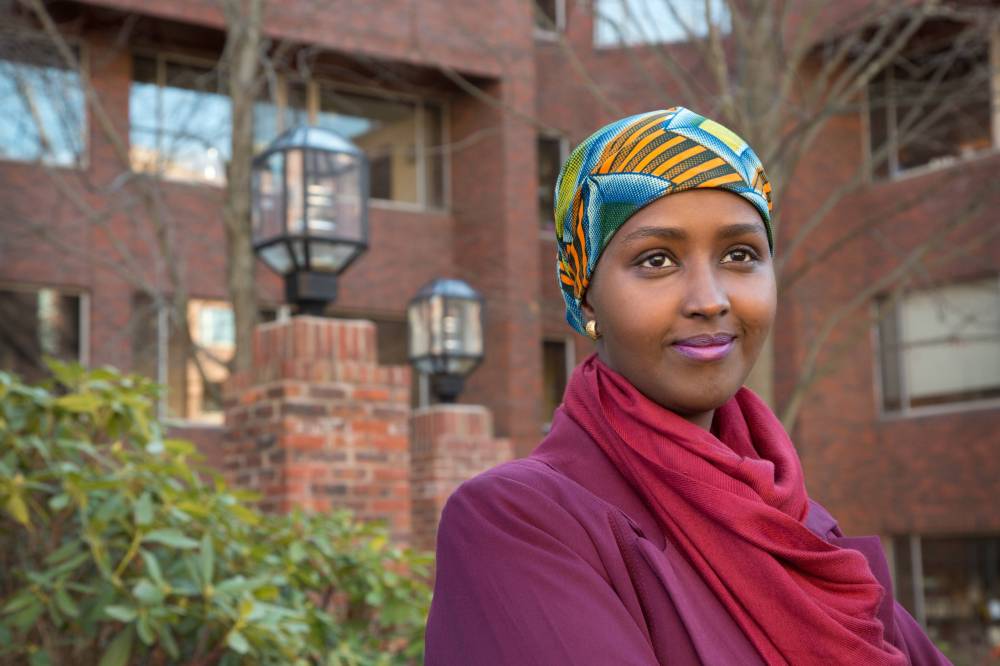Africa's First Biofuel Flights Take Off in South Africa
29 JULY 2016
History was made in mid-July. Africa's first sustainable biofuel powered flights successfully flew between Johannesburg and Cape Town.
The South African Airways (SAA) and Mango Boeing 737-800s used biofuel to power their engines on 15 July 2016. The fuel is made from a tobacco plant cultivated in Limpopo. Under Project Solaris, the plant, also named Solaris, produces small leaves, flowers and seeds which are crushed to extract a vegetable crude oil. It is a nicotine-free, hybridised tobacco plant.
Growing the crops locally had contributed to the country's National Development Plan of economic and rural development, said Musa Zwane, SAA's acting CEO. He also noted that the project had established a regional bio jet fuel supply chain, something of which we could be proud.
Nico Bezuidenhout, Mango CEO, echoed Zwane's pride. "The project also shows how, when various role players come together and collaborate, success is imminent," he said.
Environmental impact
The World Wildlife Fund South Africa (WWF-SA) said the aviation industry was one of the fastest growing sectors but it was also responsible for much of the world's greenhouse gas emissions.
Biofuels could play a key role in the move of the aviation industry from using hydrocarbon fuels.
"These are fuels manufactured from oils, sugars and biomass from plants, rather than from fossil fuels," the organisation said of biofuels. "Because plants remove carbon dioxide from the atmosphere biofuels typically can reduce the emissions from flights by between 25% and 75%."
It noted a study from the Stockholm Environmental Institute which estimated that "biofuels could feasibly reduce aviation's emissions by as much as 9% between 2020 and 2035, while still being produced in a responsible manner".
While the biofuel industry is tiny at present, concerns have been raised about the land used to harvest these plants, water consumption and other agricultural impacts. WWF-SA and the Roundtable on Sustainable Biomaterials (RSB) are studying the sustainability of biofuel crops.
"This means factoring in the population growth and agricultural demand within the region [since the displacement of food crops has been a key concern of first-generation biofuels], the protection of endangered species and critical ecosystems, and the securing of essential water resources as the climate changes."
Project Solaris has RSB certification.
WWF-SA's James Reeler said: "By using RSB-certified feedstock, SAA has demonstrated its concern with not only reducing its carbon footprint, but also ensuring that the biofuel supply chain reduces other social and environmental risks."
Project Solaris received RSB certification in September 2015 for producing the crop in line with the RSBs global standard. It is a GMO-free plant that yields significant amounts of sustainable oil.
RSB is an independent global multi-stakeholder coalition that works to promote the sustainability of biomaterials. Its certification scheme verifies that biomaterials are ethical, sustainable and credibly sourced.
South Africa.info reporter
Africa's First Biofuel Flights Take Off in South Africa
29 JULY 2016
History was made in mid-July. Africa's first sustainable biofuel powered flights successfully flew between Johannesburg and Cape Town.
The South African Airways (SAA) and Mango Boeing 737-800s used biofuel to power their engines on 15 July 2016. The fuel is made from a tobacco plant cultivated in Limpopo. Under Project Solaris, the plant, also named Solaris, produces small leaves, flowers and seeds which are crushed to extract a vegetable crude oil. It is a nicotine-free, hybridised tobacco plant.
Growing the crops locally had contributed to the country's National Development Plan of economic and rural development, said Musa Zwane, SAA's acting CEO. He also noted that the project had established a regional bio jet fuel supply chain, something of which we could be proud.
Nico Bezuidenhout, Mango CEO, echoed Zwane's pride. "The project also shows how, when various role players come together and collaborate, success is imminent," he said.
Environmental impact
The World Wildlife Fund South Africa (WWF-SA) said the aviation industry was one of the fastest growing sectors but it was also responsible for much of the world's greenhouse gas emissions.
Biofuels could play a key role in the move of the aviation industry from using hydrocarbon fuels.
"These are fuels manufactured from oils, sugars and biomass from plants, rather than from fossil fuels," the organisation said of biofuels. "Because plants remove carbon dioxide from the atmosphere biofuels typically can reduce the emissions from flights by between 25% and 75%."
It noted a study from the Stockholm Environmental Institute which estimated that "biofuels could feasibly reduce aviation's emissions by as much as 9% between 2020 and 2035, while still being produced in a responsible manner".
While the biofuel industry is tiny at present, concerns have been raised about the land used to harvest these plants, water consumption and other agricultural impacts. WWF-SA and the Roundtable on Sustainable Biomaterials (RSB) are studying the sustainability of biofuel crops.
"This means factoring in the population growth and agricultural demand within the region [since the displacement of food crops has been a key concern of first-generation biofuels], the protection of endangered species and critical ecosystems, and the securing of essential water resources as the climate changes."
Project Solaris has RSB certification.
WWF-SA's James Reeler said: "By using RSB-certified feedstock, SAA has demonstrated its concern with not only reducing its carbon footprint, but also ensuring that the biofuel supply chain reduces other social and environmental risks."
Project Solaris received RSB certification in September 2015 for producing the crop in line with the RSBs global standard. It is a GMO-free plant that yields significant amounts of sustainable oil.
RSB is an independent global multi-stakeholder coalition that works to promote the sustainability of biomaterials. Its certification scheme verifies that biomaterials are ethical, sustainable and credibly sourced.
South Africa.info reporter
Africa's First Biofuel Flights Take Off in South Africa











